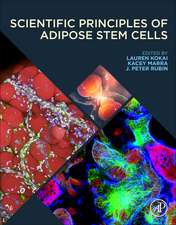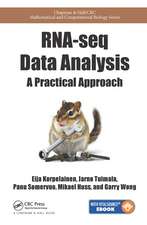Developmental and Fetal Origins of Differences in Monozygotic Twins: From Genetics to Environmental Factors
Editat de Alexandra Matias, Isaac Blicksteinen Limba Engleză Paperback – 14 mai 2020
- Examines the major causes of discordance in monozygotic twins and their relevance for future studies and clinical management
- Discusses NIPT in MZ twins, twin imaging during fetal development, blood tests and forensic analysis
- Features contributions from international experts in twin genetics and developmental biology
Preț: 754.08 lei
Preț vechi: 985.52 lei
-23% Nou
Puncte Express: 1131
Preț estimativ în valută:
144.30€ • 151.73$ • 119.23£
144.30€ • 151.73$ • 119.23£
Carte tipărită la comandă
Livrare economică 10-24 aprilie
Preluare comenzi: 021 569.72.76
Specificații
ISBN-13: 9780128200476
ISBN-10: 0128200472
Pagini: 386
Ilustrații: 90 illustrations (20 in full color)
Dimensiuni: 191 x 235 x 27 mm
Editura: ELSEVIER SCIENCE
ISBN-10: 0128200472
Pagini: 386
Ilustrații: 90 illustrations (20 in full color)
Dimensiuni: 191 x 235 x 27 mm
Editura: ELSEVIER SCIENCE
Public țintă
Human geneticists; human genomicists; translational researchers in genomic medicine, pediatrics, fetal medicine, obstetrics and gynecology, reproductive biology, epidemiology, public health, bioinformatics, and endocrinology; life science researchers; oncologists; obstetricians; pediatricians; immunologists; bioengineers; developmental biologistsCuprins
1. Introduction
2. Biology of monozygotic twinning
3. Mechanisms of discordance in
monozygotic twins: why and when?
4. Monozygotic twins in history:
enlightenment by mythology and
ethnography
5. Genetics and epigenetics differences in
monozygotic twins: the vision of the
geneticist
6. Heterokaryotypic monozygotic twins
7. Differences in placentation in
monochorionic twin pregnancies
8. Differences in growth: selective
intrauterine growth restriction in
monochorionic twins
9. Hemoglobin differences at birth in
monochorionic twins
10. Differences in amniotic fluid in MZ
twins
11. Twin-reversed arterial perfusion
sequence: different identical twins
12. Major discordant anomalies in
monozygotic twins: management and
outcome
13. Congenital heart disease in
monozygotic twins
14. Spotting the differences in the
first trimester of pregnancy in MZ twins:
the issue of aneuploidies and TTTS
screening
15. Noninvasive prenatal screening in
twin pregnancies
16. A new way to look at multiples: the
power of image
17. Differences in monozygotic twins: the
implications of diet and intestinal
microbioma
18. Differences in development in
monozygotic twins
19. Monozygotic twins: a personal as
well as a criminal and jurisdictional
approach
20. Monozygotic twin differences in
perceived age
21. The environmental differences
between twins in utero and their
importance for downstream development: a
need for standardized monitoring in
obstetric research
22. Future perspectives
2. Biology of monozygotic twinning
3. Mechanisms of discordance in
monozygotic twins: why and when?
4. Monozygotic twins in history:
enlightenment by mythology and
ethnography
5. Genetics and epigenetics differences in
monozygotic twins: the vision of the
geneticist
6. Heterokaryotypic monozygotic twins
7. Differences in placentation in
monochorionic twin pregnancies
8. Differences in growth: selective
intrauterine growth restriction in
monochorionic twins
9. Hemoglobin differences at birth in
monochorionic twins
10. Differences in amniotic fluid in MZ
twins
11. Twin-reversed arterial perfusion
sequence: different identical twins
12. Major discordant anomalies in
monozygotic twins: management and
outcome
13. Congenital heart disease in
monozygotic twins
14. Spotting the differences in the
first trimester of pregnancy in MZ twins:
the issue of aneuploidies and TTTS
screening
15. Noninvasive prenatal screening in
twin pregnancies
16. A new way to look at multiples: the
power of image
17. Differences in monozygotic twins: the
implications of diet and intestinal
microbioma
18. Differences in development in
monozygotic twins
19. Monozygotic twins: a personal as
well as a criminal and jurisdictional
approach
20. Monozygotic twin differences in
perceived age
21. The environmental differences
between twins in utero and their
importance for downstream development: a
need for standardized monitoring in
obstetric research
22. Future perspectives

















